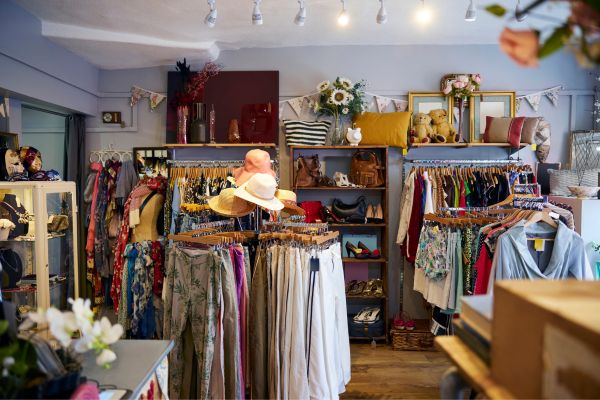Let’s be real—shopping for clothes isn’t just about picking something that looks good anymore. With climate change, fast fashion waste, and ethical concerns making headlines, many people are starting to wonder: how do you know if what you’re buying is truly sustainable? The thing is, brands throw around buzzwords like “eco-friendly” or “green” all the time, but that doesn’t always mean the piece is as planet-conscious as it sounds. So, if you’ve been asking yourself how to identify sustainable clothing without getting fooled by fancy marketing, you’re in the right place.
Why Sustainable Clothing Matters
Before diving into the “how,” it’s worth pausing for the “why.” The fashion industry is one of the biggest contributors to pollution—both in terms of carbon emissions and textile waste. Millions of tons of clothes end up in landfills every year, often made from synthetic fabrics that don’t break down easily. Add in the fact that many fast fashion items are produced under questionable labor conditions, and suddenly, that cheap $10 shirt doesn’t look so harmless. Choosing sustainable clothing is about reducing harm—to the environment, to workers, and to future generations.
Look Beyond the Label
When it comes to figuring out how to identify sustainable clothing, labels are both your friend and your enemy. Yes, they can tell you where something was made or what fabric it uses, but sometimes brands use vague phrases like “eco-conscious” without any real backing. The trick is to look for certifications. Labels such as GOTS (Global Organic Textile Standard), Fair Trade Certified, or OEKO-TEX are actual verifications, not just marketing fluff. If you don’t see any certification, dig deeper.
Check the Fabrics
One of the easiest ways to spot whether a piece of clothing is sustainable is by looking at the material. Fabrics made from organic cotton, hemp, bamboo, or Tencel are generally better choices. They use fewer chemicals, less water, and are often biodegradable. On the flip side, if something is 100% polyester, nylon, or acrylic, you’re basically buying plastic. Now, that doesn’t mean polyester is always bad—recycled polyester, for example, is far more sustainable than virgin polyester. So the key is asking: is this fabric renewable, recyclable, or biodegradable?
Think About Durability
Here’s a little truth bomb: the most sustainable clothing is often the one you wear the longest. If you buy a trendy piece that falls apart after two washes, it doesn’t matter if it was made of organic cotton—it’s still wasteful. A huge part of how to identify sustainable clothing is checking quality. Look at the stitching. Feel the fabric. Ask yourself if this piece will last you five years or if it’s going to stretch, shrink, or unravel after a season. If it’s built to last, it’s usually a better choice.
Investigate the Brand
Sometimes, the clothing itself only tells part of the story. The company behind it matters too. Brands committed to sustainability are usually transparent about their supply chain. They’ll tell you where their cotton is grown, where their factories are, and even how much they pay workers. If a brand’s website is vague or avoids those details, that’s a red flag. On the other hand, if they openly share sustainability reports, use renewable energy, or invest in recycling programs, that’s a solid sign they’re serious about their claims.
Avoid the Fast Fashion Trap
Let’s be honest—fast fashion is tempting. Cheap prices, trendy designs, and endless options. But here’s the thing: if a brand releases hundreds of new styles every week, it’s almost impossible for them to be genuinely sustainable. True eco-conscious fashion takes time. It values quality over quantity. So, one way to answer the question how to identify sustainable clothing is to simply ask: is this brand focused on long-term fashion or fast, disposable trends? If it’s the latter, you already know the answer.
Pay Attention to Packaging
Sustainability isn’t just about the clothes themselves. Packaging plays a role too. If your new shirt arrives in layers of plastic bags, that’s a bad sign. Brands that care about the environment often use minimal packaging or eco-friendly materials like recycled paper or compostable bags. It’s a small detail, but it tells you a lot about the bigger picture of their values.
Consider Secondhand and Upcycled Options
Here’s a little twist you might not expect: the most sustainable clothing might not even be “new.” Thrifting, buying vintage, or choosing upcycled fashion is one of the best ways to reduce waste. When you buy secondhand, you’re extending the life cycle of an item that already exists, which means fewer new resources are used. Plus, let’s be real, thrift finds often have way more personality than mass-produced fast fashion.
The Price Factor
Here’s a tough pill to swallow—sustainable clothing often costs more. But that’s because you’re paying for fair wages, better materials, and ethical production. The thing is, while it might sting at checkout, the cost per wear usually works out cheaper. Think about it: if you buy a $20 fast fashion sweater that falls apart after one season, versus an $80 sustainable sweater that lasts five years, the second option is actually the smarter investment.
Trust Your Gut
At the end of the day, shopping sustainably doesn’t have to feel overwhelming. If something feels too good to be true—like a brand claiming 100% eco-friendly production while pumping out dirt-cheap products—it probably is. Learning how to identify sustainable clothing is partly about research, but it’s also about trusting your instincts.
Final Thoughts
So, here’s the takeaway: sustainable clothing isn’t about being perfect, it’s about being mindful. It’s about checking fabrics, researching brands, and thinking about how long you’ll actually wear something. It’s about resisting the pull of fast fashion and instead choosing pieces that respect both people and the planet. The next time you’re out shopping and wondering how to identify sustainable clothing, remember that every choice you make sends a message. And honestly, choosing better clothes is just another way of choosing a better future.
